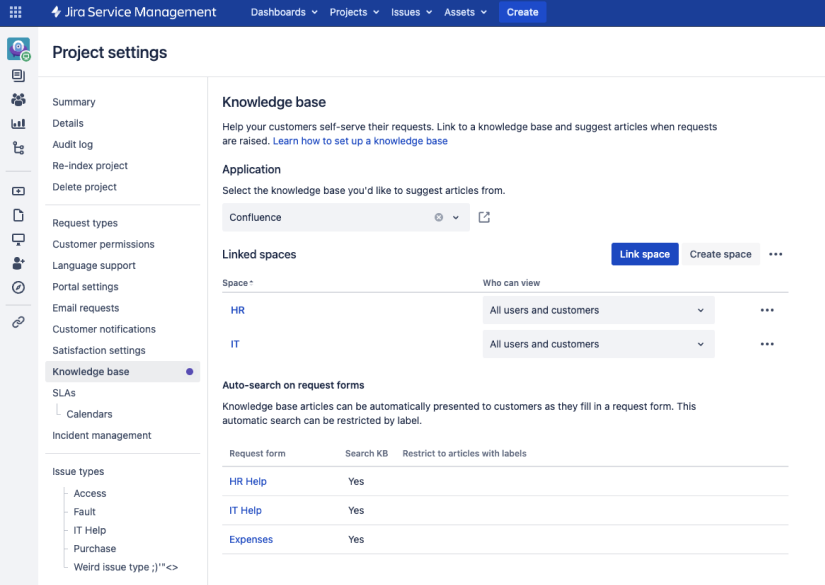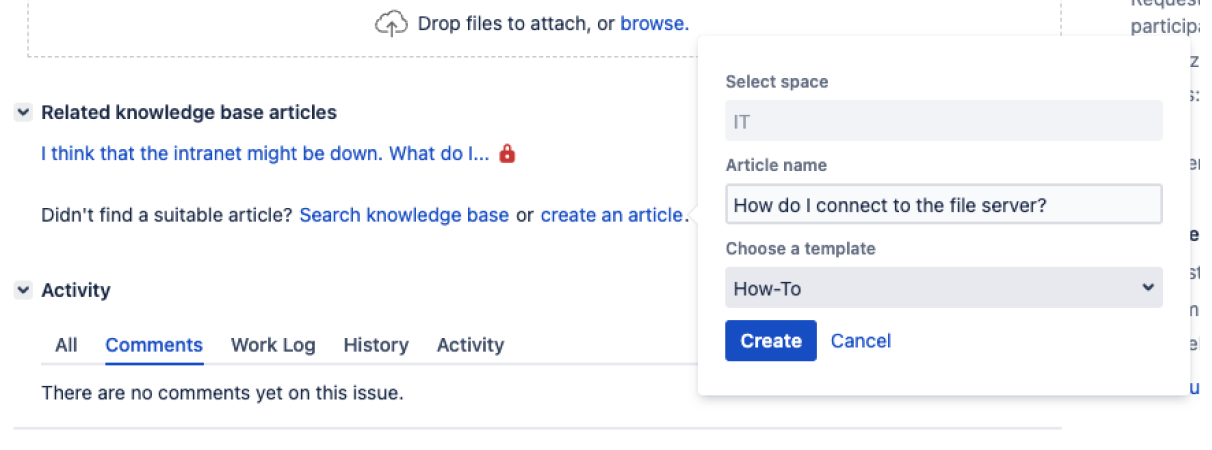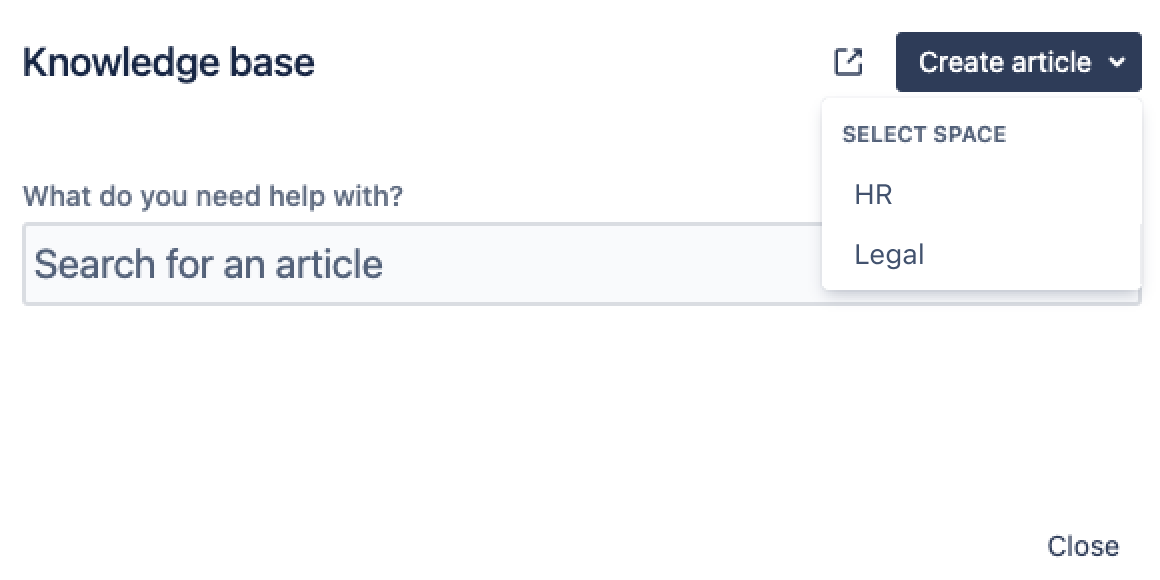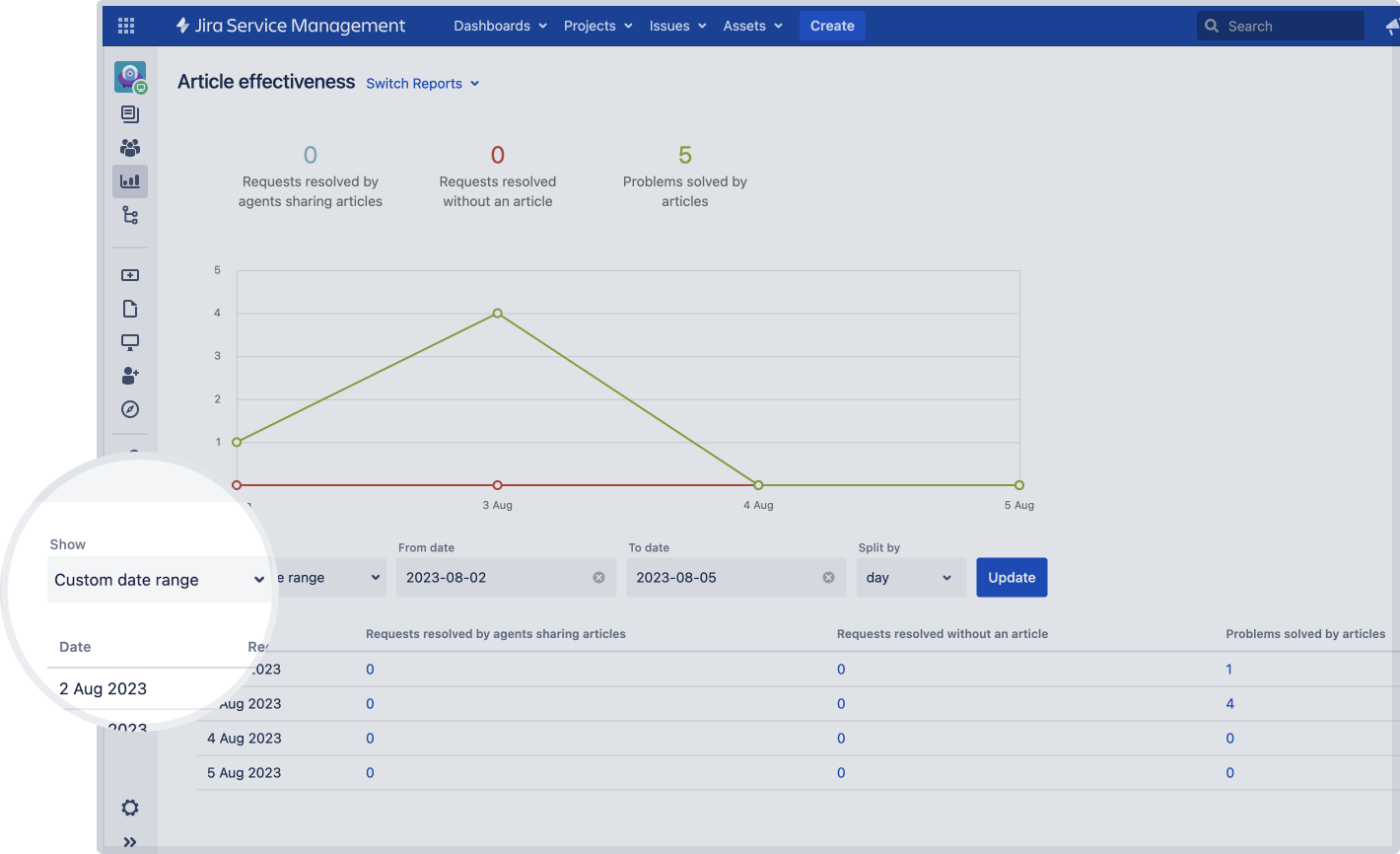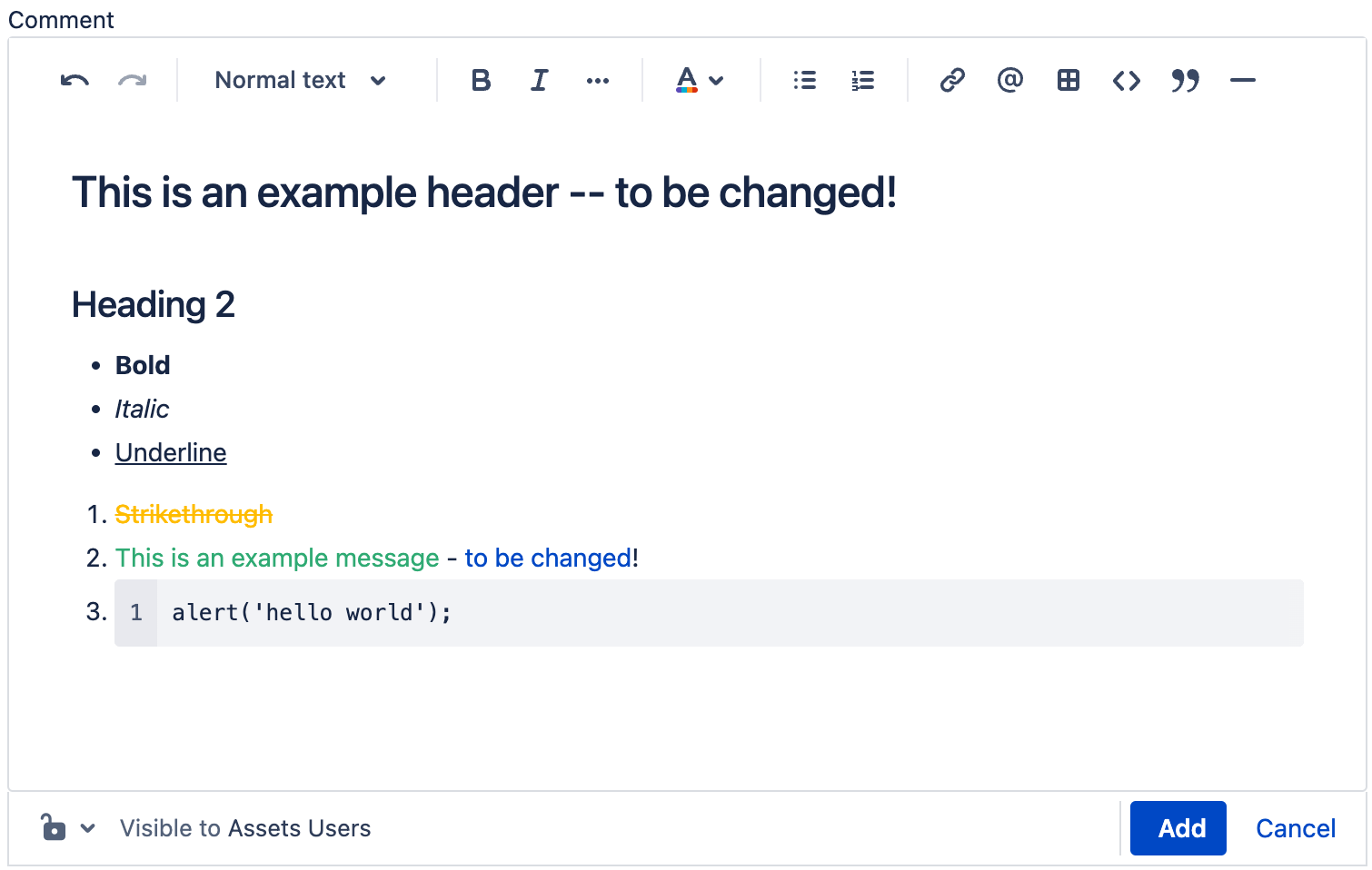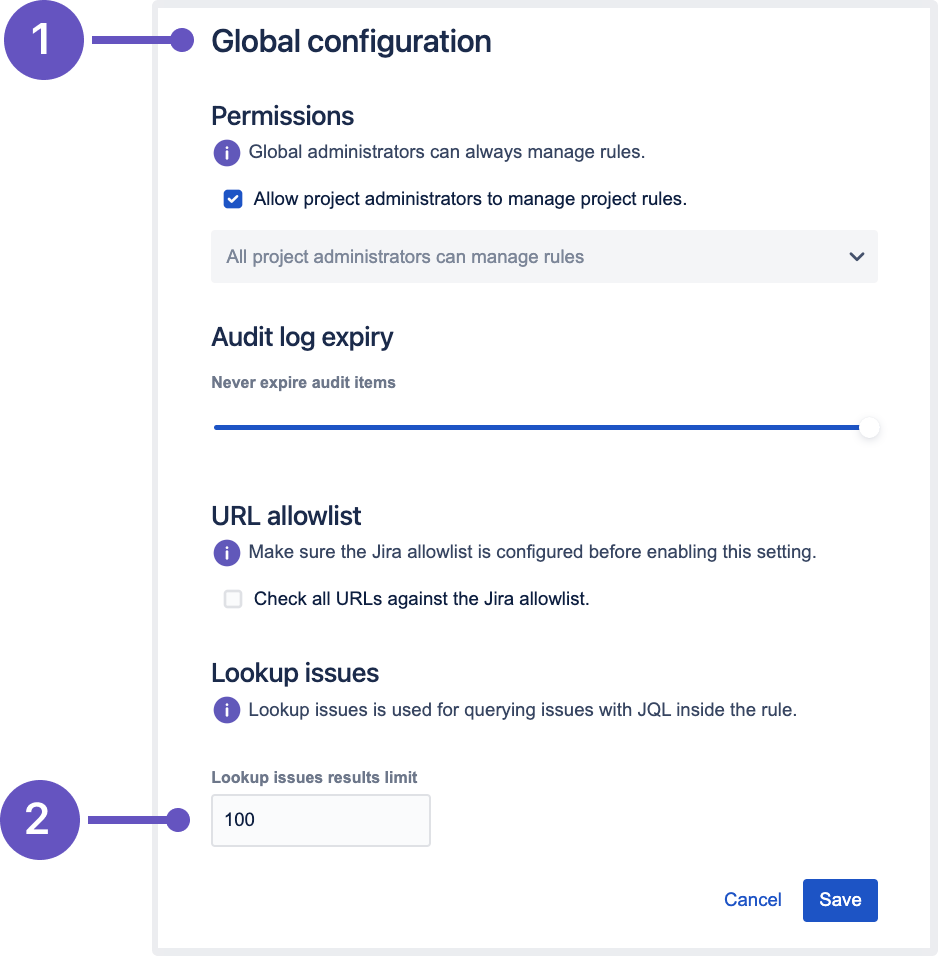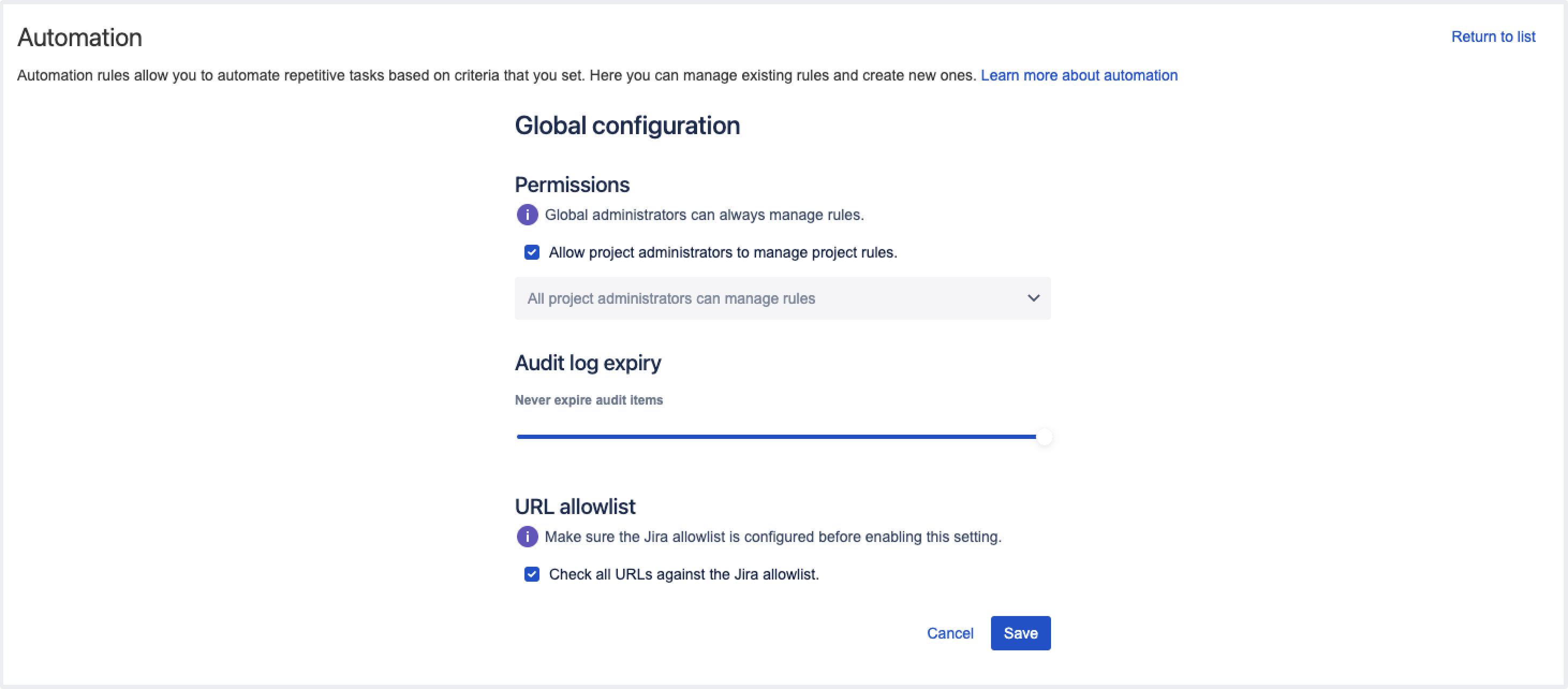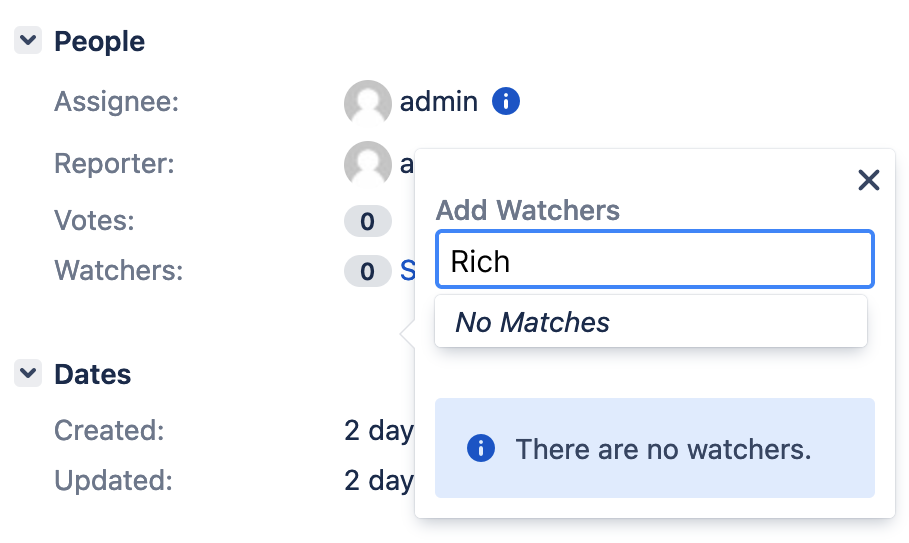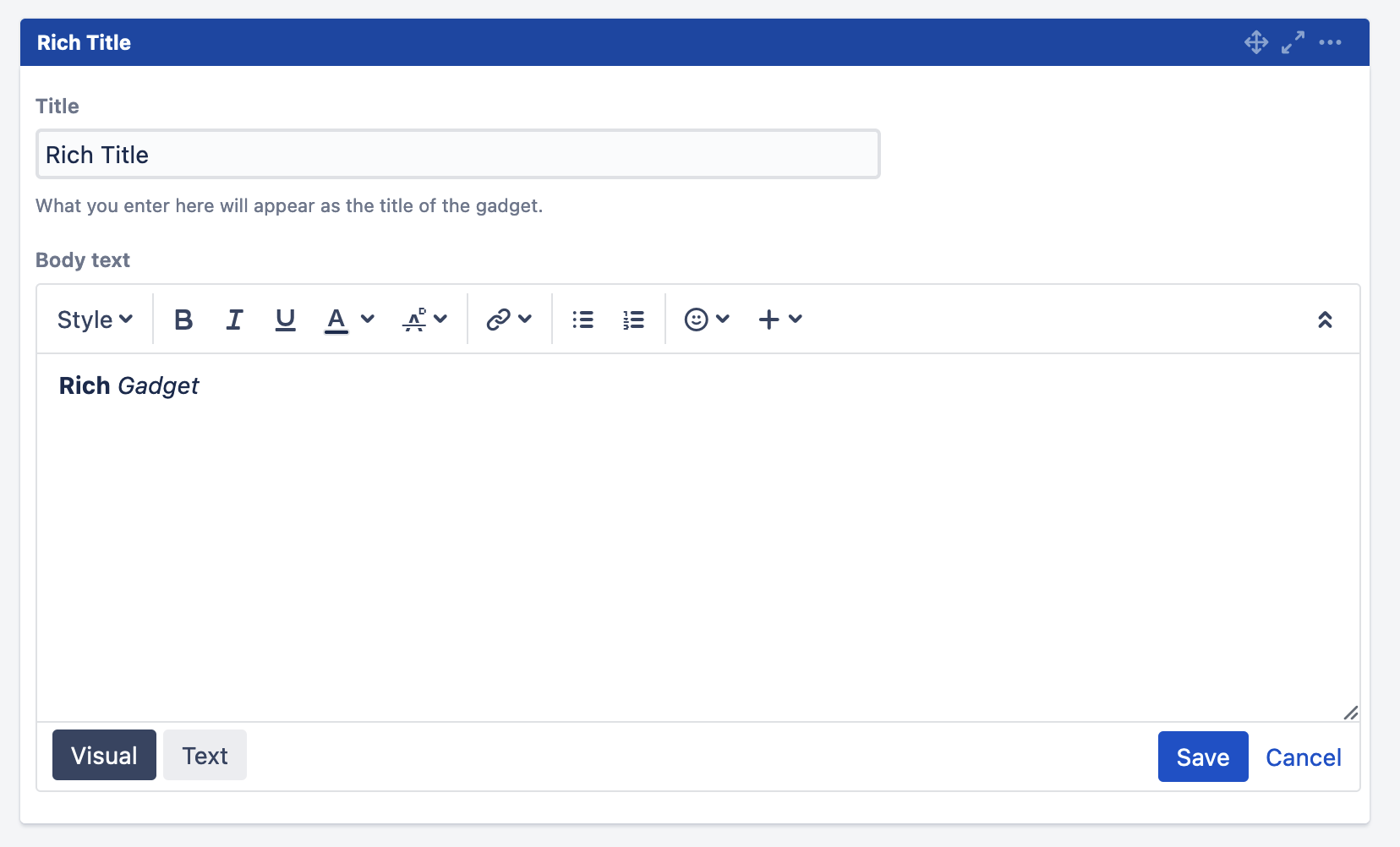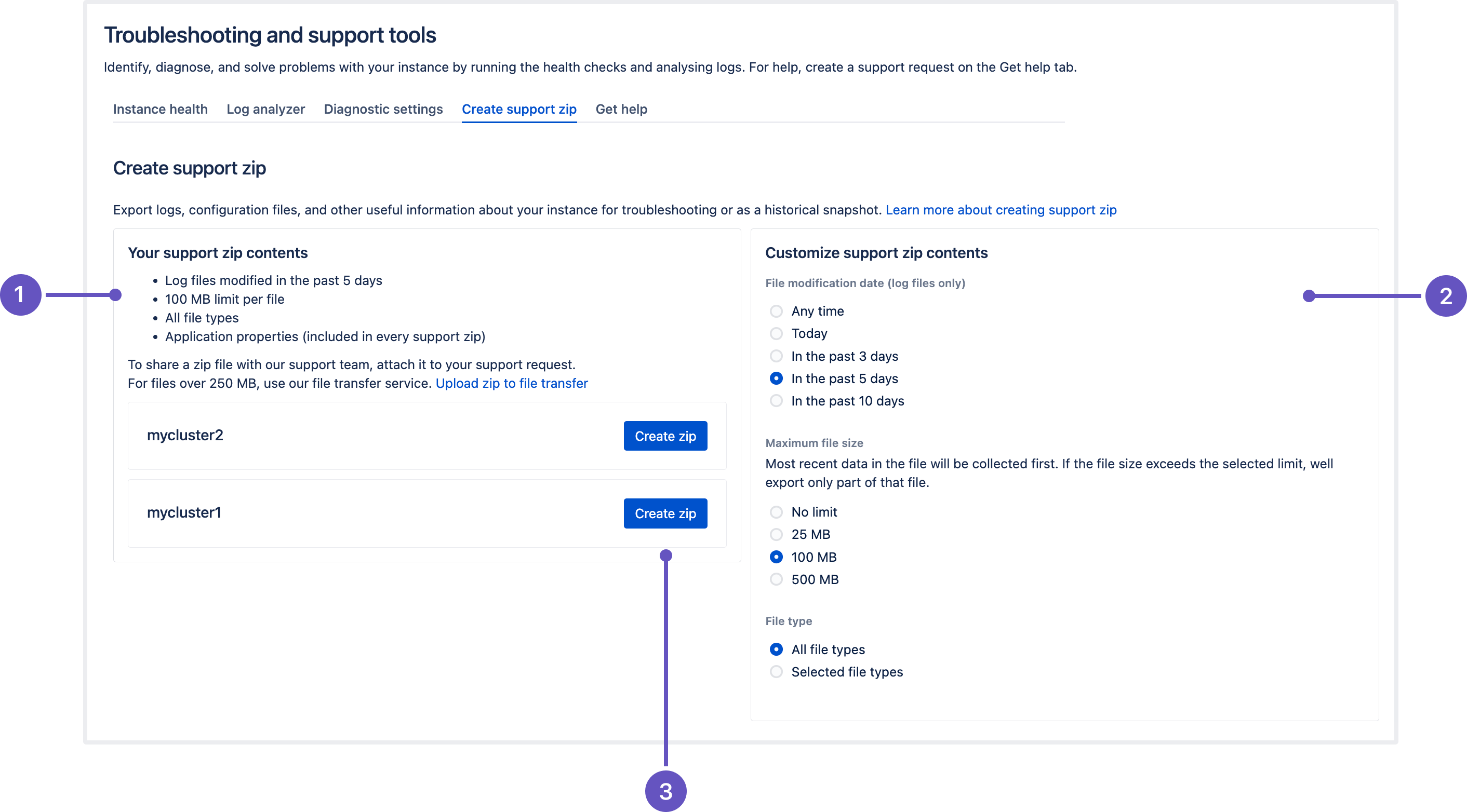이 문서는 에 출시된 Jira Service Management 5.11.x Release Note 릴리즈 노트를 공유하기 위해 작성되었다.
Highlights
- 여러개의 컨플루언스 공간을 하나의 포털에 연결
- 모든 타임 슬라이스(Time Slice)에 대한 데이터 가져오기
- Assets에 대한 새로운 편집기
- 고객페이지의 검색환경 개선
- Confluence 사용자를 위한 Assets 정보에 대한 읽기전용 권한 제공
- AQL connectedTickets() method의 성능 개선
- 접근성 개선
- 출시예정인 Assets NVD Integration로의 업그레이드
- Jira automation(자동화)에 새로운 작업 추가
- Masking secret keys 자동화 규칙에서의 secret Keys Masking
- Allowlist in Jira automation is now enabled by default Jira의 자동화 허용목록이 기본적으로 활성화됩니다.
- Select issue watchers only from users who have access to your project 프로젝트 접근 권한이 있는 사용자중에서 issue watcher를 선택
- The Rich Text gadget substitutes the deprecated Text gadget 서식이 있는 Text gadget은 더 이상 사용되지않는 Text gadget을 대체합니다.
- Feature improvement: project shortcuts can now be reordered 프로젝트 바로가기를 재정렬가능합니다.
- Store attachments more efficiently in the S3 object storage S3 객체 스토리지에 첨부파일을 효율적으로 저장이 가능합니다.
- Improvements to the support zip creation 지원하는 Zip 생성에 대한 개선
- Project permissions get extended configuration 프로젝트 권한에서 설정할수있는 부분이 증가합니다.
여러개의 Confluence 공간을 하나의 포털에 연결 DATA CENTER
서비스 프로젝트를 여러 공간에 연결하면 에이전트와 고객이 셀프 서비스를 위한 더 넓은 범위의 article에 접근할 수 있습니다. knowledge base 설정하는 방법에 대하여 자세히 알아보기
What's new?
- 이제 프로젝트 관리자는 동일한 Confluence 인스턴스에서 여러 space에 연결할 수 있습니다. 새롭게 추가된 기능을 시도하려면 Project settings > Knowledge base로 이동하여 Link space를 선택하세요.
에이전트들은 새로운 article들을 생성할때 적절한 공간을 선택할수있습니다. 시도해보려면 issue로 이동하여 Related knowledge base articles section에 대한 하이퍼 링크를 클릭하세요.
프로젝트를 두 개 이상의 space에 연결한 경우에만 space를 선택할 수 있습니다.
또한 knowledge base 검색 및 article 생성도 향상되었습니다. 이를 시도하려면 사이드바에서 Knowledge base를 선택하세요.
Get data for any time slice DATA CENTER
reporting 기능에서 유연한 날짜 범위를 활용하세요.
이제 프로젝트 관리자와 agents들은 사전 설정된 옵션 외에 특정 날짜 범위를 선택하여 사용자 정의 기간에 대한 데이터를 분석할 수 있습니다.
그리고, 더 이상 지난 1년의 data에 국한되지 않고 필요한 12개월 기간의 데이터에 대한 report를 생성가능합니다.
custom reports를 생성하는 방법에 대하여 알아보기
Assets
우리는 다른 Jira Service Management UI의 Editor와 일치하는 현대적이고 일관된 경험을 만들기 위해 Assets의 Editor를 업데이트하고 있습니다. 또한 업데이트를 통해 텍스트 색상 및 형식 텍스트를 코드로 일관되게 적용할 수 있습니다.
이러한 변경 사항을 개체 설명 및 Post-Function이메일 템플릿에 적용했습니다.
새로운 편집기를 확인하려면, object에 댓글을 추가하거나 새로운 post-function 이메일 템플릿을 만드세요..
Customers(고객) 페이지의 검색 환경 개선
고객 페이지의 검색 환경을 개선하고 검색 요청 시간 초과 시 표시되는 메시지를 보다 명확하게 만들었습니다. 현재 경험으로 볼 때, 메시지는 프로젝트에 추가된 고객이 없다는 것을 나타내며, 이는 정확하지 않습니다.새로운 경험에서는 프로젝트 관리자에게 검색 기준을 구체화하도록 지시하고 검색 표시줄을 다시 시도할 수 있도록 합니다.
Confluence 사용자의 Assets 정보에 대한 읽기 전용 액세스
액세스 패턴이 강화되어 Assets 데이터에 대한 보안이 강화되었습니다. 라이센스가 없는 사용자는 응용 프로그램 링크를 통해 승인된 경우에만 Assets 데이터에 액세스할 수 있습니다. 이번 변경으로 Confluence 사용자는 Jira Service Management 라이센스 없이 Assets - Confluence Macro 앱을 통해 자산 데이터에 대한 보기 전용 액세스 권한을 갖게 됩니다.
AQL ConnectedTickets() 방법의 성능 향상
connectedTickets() method에서 추가 인수를 포함하는 Advanced Query Language (AQL) 검색은 큰 인스턴스의 메모리와 영향 성능을 많이 사용합니다.우리는 이 문제를 해결했으며 수정은 이러한 검색의 효율성을 높이고 Jira 인스턴스의 안정성을 향상시킵니다. 또한 빠른 검색을 위해 AQL 쿼리를 최적화하는 것이 좋습니다. AQL 쿼리를 최적화하는 방법에 대하여 알아보기
저시력 및 키보드 전용 사용자를 위한 접근성 수정 사항 DATA CENTER
화면 판독기와 키보드만 사용하는 사용자를 위한 접근성 업데이트를 더 많이 제공합니다. 이 릴리스의 하이라이트에는 Help 센터 오류에 대한 개선된 공지사항, Help 센터 오류 사이 전환 시 열 머리글 및 문제의 활동 섹션이 포함됩니다. 또한 표시 및 숨기기 도구 모음 요소에 도달하는 경험도 향상되었습니다.
Assets 버전 2.0.0으로 업그레이드 - NVD 통합
NVD(National Vulnerability Database)는 Assets - NVD Integration App에서 사용 중인 현재 API(1.0)를 해제하고 있습니다. Assets - NVD Integration Version 1.3.12 이전 버전은 API가 해제된 후에는 Assets로 데이터를 가져올 수 없습니다.
다음 기능은 지라 플랫폼에 실시간으로 제공되며, 이는 지라 소프트웨어 및 지라 서비스 관리에서 사용할 수 있음을 의미합니다.
Jira 자동화(automation) 9.0 release
Jira Service Management 5.11과 함께 Automation for Jira 앱으로 업그레이드된 Jira Automation 9.0을 출시합니다. Jira Automation 9.0은 보안 기능을 개선하고 자동화 규칙에 Lookup issues와 Create variable이라는 두 가지 새로운 작업을 도입했습니다. 이 버전은 다음 Jira 애플리케이션과 호환됩니다:
- Jira Software Data Center 8.20.0 and later
- Jira Service Management 4.20.0 and later
Jira 자동화에 추가된 새로운 작업 DATA CENTER
Jira Automation 9.0에 추가된 두 가지 새로운 작업을 사용하여 Jira에서의 작업을 보다 효율적으로 관리할 수 있습니다:
- Lookup issues : 문제를 조회하고 결과를 집계하여 다른 작업에 사용할 수 있습니다.
- Create variable : 텍스트 값 또는 Smart 값을 저장하고 다른 작업에 사용할 수 있습니다.
지라 자동화 작업 및 사용 방법에 대해 자세히 알아보기
Lookup issues 작업
이 작업을 통해 JQL 쿼리를 기반으로 문제를 검색하고 해당 데이터를 Smart 값 {{lookupIssues}}에 저장할 수 있습니다. 이 값은 목록과 같은 역할을 하므로 동일한 형식의 다른 값과 함께 작동합니다.
Smart 값 사용에 대한 자세한 내용은 다음 가이드를 참조하십시오:
기본적으로 JQL 쿼리에서 검색할 수 있는 이슈의 최대 수는 100개로 설정되어 있으며 다음 값을 사용하여 글로벌 구성에서 이슈 목록 제한을 변경할 수 있습니다:
1부터 시작하는 임의의 정수를 더합니다.
제한을 제거하려면 "-1"을 입력하십시오. 성능 문제가 발생할 수 있음을 고려하십시오.
지라 자동화의 글로벌 구성 옵션
Lookup Issues 작업에 대해 JQL에서 쿼리한 문제의 제한 설정
Create variable 작업
이 작업을 통해 분기 내부를 포함한 규칙의 전체 범위 내에서 사용할 수 있는 변수 내부에 Smart 값의 내용을 저장할 수 있습니다.
예를 들어 {{storypoints}} 구문을 사용하여 규칙에서 액세스할 수 있는 storypoints라는 변수를 생성할 수 있습니다.
변수 이름은 알파벳 문자만 포함할 수 있습니다. 이 조건이 충족되지 않으면 작업을 저장할 때 "값은 알파벳 문자만 될 수 있습니다"라는 오류가 반환됩니다.
자동화 규칙에서 비밀 키 감추기 DATA CENTER
Microsoft Teams나 Slack과 같은 외부 앱과 안전하고 타협 없는 연결을 구축하는 것이 얼마나 중요한지 알고 있습니다. Jira Automation 9.0에서는 외부 서비스에 연결하기 위해 자동화 규칙에 대한 알림 동작에 사용하는 비밀 키와 URL을 마스킹하기 시작했습니다.
비밀 키 마스킹 기능을 통해 보안 문제와 인스턴스 전체의 안전한 데이터 재사용을 위한 신뢰할 수 있는 솔루션을 제공합니다:
- 마스킹 메커니즘은 자동화 규칙에서 비밀 키의 값이 사용자에게 보이지 않도록 보장합니다. 비밀 키를 보거나 목록에서 선택할 때 비밀 키의 이름은 표시되지만 값은 표시되지 않습니다.
- 역할에 따라 비밀 키를 만들고 편집하고 제거할 수 있는 [비밀 키] 패널이 하나 있습니다.
- 범위에 따라 여러 프로젝트에서 비밀 키를 노출 위험 없이 재사용할 수 있습니다.
비밀 키를 보거나 새 키를 만들려면:
- 화면의 우측 상단 모서리에서, Administration > System 선택.
- 좌측 칸에서 , Automation rules 선택.
- 우측 … 메뉴 클릭, Manage secret keys 선택.
- 새로운 secret을 생성하려면 create a new sceret key 선택.
필드를 입력하고 추가를 선택합니다. 프로젝트 관리자인 경우 비밀키에 대해 단일 프로젝트 범위만 선택할 수 있으며 시스템 관리자인 경우 단일 프로젝트, 다중 프로젝트 또는 모든 프로젝트 범위를 선택할 수 있습니다.
secret key masking에 대하여 자세히 알아보기
지라 자동화의 허용목록이 기본적으로 활성화 됩니다. INCLUDES BREAKING CHANGES
This change might break currently configured rules if the provided URLs aren’t allowlisted.
Jira system administrators can fix broken rules by adding the URLs to the allowlist or disabling allowlist verification. We don’t recommend disabling the feature as it can pose a security risk.
Learn more about checking URLs against the Jira allowlist
To strengthen the security in Jira automation and enhance the protection against Server-Side Request Forgery (SSRF) attacks, we’re changing the way Jira handles external requests by enabling Jira allowlist by default. In Jira automation, the allowlist for sending outbound HTTP requests is always enabled in the Global configuration menu.
How this affects your automation rules
You can’t publish a rule if the URL you are requesting isn’t present in Jira's allowlist.
Automation rules that no longer work after this change can still be marked as successfully executed in the UI. To check if the rule was triggered and view its final result, inspect the audit log — if the rule doesn’t work due to allowlisting changes, you’ll see an execution error. Learn more about the audit log
If a rule is currently disabled, you won’t be able to make it active and will see the “Error 404: file not found” in the web console. Adding the requested URL to the allowlist will fix the error.
The information about allowlist settings is stored in the Application properties table on the System info page. To access the settings, go to Administration > System > System info.
Learn more about advanced Jira configuration
Select issue watchers only from users who have access to your project
Have you ever added a user to watch an issue without knowing if they have access to your project? The user picker for the Watchers field listed all available users and responded with an error if you selected a user without project access.
We've addressed this scenario by configuring a background filter that sorts out users without access to a specific project from the list of potential issue watchers. Therefore, confidential information won’t be disclosed in email notifications to users who shouldn't view the project.
Now, when adding a watcher to an issue, you’re selecting only from users who have the Browse projects permission in the project the issue belongs to. Other users won’t be listed in the Add watchers dialog.
If you enter the name of the user who can’t view the issue, the dialog will display the “No matches“ message.
The Rich Text gadget substitutes the deprecated Text gadget
We’re deprecating the Text gadget for dashboards and introducing the Rich Text gadget instead. The Rich Text gadget uses the rich text editor instead of the plaintext area in edit mode. The new gadget eliminates a potential security risk posed by a possible arbitrary HTML that the Text gadget might contain.
The rich text editor at the core of the Rich Text gadget
The output of the rich text editor usage
Feature improvement: project shortcuts can now be reordered DATA CENTER
Keep project shortcuts better organized as we add the ability to rearrange them in the project sidebar. You can now make the frequently used links appear first in the list, or group them together to keep all related info in one spot:
- rearrange the shortcuts by dragging and dropping
- change shortcut positioning in the list by using the Move up and Move down buttons
Learn more about managing project shortcuts
Improvements to the support zip creation
In this release, we’ve revamped the process of creating a support zip in the Atlassian Troubleshooting and Support Tools (ATST) app. The Create a support zip page got a new design and enhanced functionality:
- Users are now able to pick one of four file size limitation options (25/100/500 MB per file)
- Added an option to select logs based on the last file modification date: any time, today, or in the past 3/5/10 days
- The default maximum file size is now 100 MB per file
- Added new API parameters to support File modification date and Maximum file size options
- After creating a zip, the customization preferences are saved and shared across the instance
- Verify the contents of your zip file
- Customize the contents of your zip file
- Create a new support zip on this node
Learn more about creating a support zip
Store attachments more efficiently in the S3 object storage DATA CENTER INCLUDES BREAKING CHANGES
This feature is currently available behind the feature flag com.atlassian.jira.attachments.storage.configurable. When enabled, it introduces breaking changes to the API and might also break some Jira apps. Check what’s changed in the API
Make sure that you properly test the feature before enabling it in your production environment. Learn how to enable dark features in Jira
If you’re using Jira Service Management 5.11.0 and running your application in AWS, you can store attachments in Amazon S3 object storage. This doesn’t apply to Asset object attachments in Jira Service Management as they’ll still be stored in Jira shared home directory.
S3 object storage offers an enhanced enterprise experience compared to the Network File System (NFS), especially for customers with large or growing data storage needs. Learn more about configuring Amazon S3 object storage
You can also store attachments in a third-party object store that exposes an S3-compatible API. However, we’re not providing direct support for attachments that are stored in an object store other than Amazon S3.
Changes to the API
Some Jira APIs aren't compatible with the introduced S3 object storage method as they expose filesystem-specific concepts such as java.io.File.
Some apps still use these incompatible APIs and may not function correctly when attachments are stored in S3. Ensure you test the apps on your instance before enabling this feature.
These APIs have been deprecated since Jira 5.7 or earlier, and most of them have alternatives documented in the Javadocs:
The following API classes may not function correctly from Jira 5.11 for instances that have configured their attachments to be stored in S3.
Expand to view API classes incompatible with attachments stored in S3
How S3 object storage is configured in Jira
S3 object storage is configured in the filestore-config.xml file that should be located in Jira <localhome>. To use S3 as a target location for attachments, the filestore attribute in the filestore-config.xml must match the s3-filestore id.
Example filestore-config.xml file configured to use S3 object storage
If you’re already using Amazon S3 to store avatars
If you already have S3 object storage configured and want to keep attachments in the same bucket as avatars, the filestore attribute should point to the same bucket where avatars are located.
Example filestore-config.xml for storing both avatars and attachments in S3, in the same bucket
To use separate buckets for attachments and avatars, define multiple <s3-filestore> elements and reference each of them in the respective association targets.
Example filestore-config.xml for storing both avatars and attachments in S3, in separate buckets
Project permissions get extended configuration DATA CENTER
After this update, some users might not see every person that was previously displayed in Assignee, Reporter, and user mentions.
If you don’t want to have this update immediately and need to adjust the project permissions first, disable this feature flag: com.atlassian.jira.ignoreBrowseUsersPermissionsInUserPickers. To use the updated functionality, just enable the flag again.
Learn how to manage dark features in Jira
To enhance the privacy and security of your project information, we’re making changes to the project permissions that’ll give your more granular control over the level of data displayed to users.
You can now set up more “contextual” browsing within the project by defining user visibility in mentions, Assignee, and Reporter pickers. This lets you disclose the key information needed to complete a task, without giving users full permissions in the project.
What has changed
We no longer check the Browse users permission for User mentions (@user) as well as Assignee and Reporter pickers. Instead, we validate the following permissions of a user that's interacting with the pickers or wants to mention someone:
- Assign issues for Assignee. This picker will now show all users that have the Assignable user permission in the project.
- Modify reporter for Reporter.
- Browse projects for User mentions.
Based on these permissions, we define whom the user will see in these pickers and mentions.
The pickers and mentions will also work for anonymous users if those users have proper access to the project. For bulk edit operations that include issues from multiple projects, only users that have appropriate permissions to all of these projects will be displayed.
Learn more about project permissions and how to configure them
